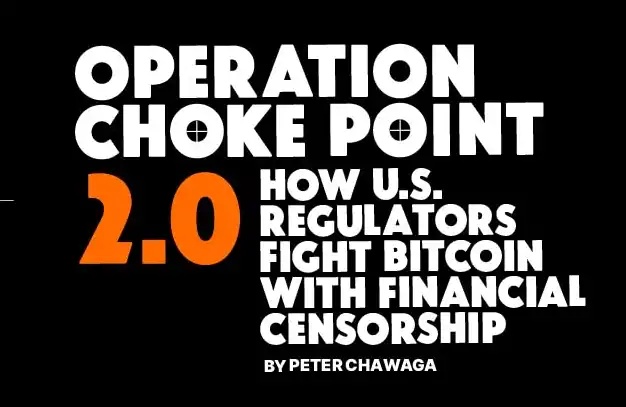Xshares: Will Friend.tech's entry into a new stage bring hope for innovation in the simulation trading?

Author: Luccy, BlockBeats
Editor: Jaleel, BlockBeats
One month ago, a "three-no" product project without announcement, explanation, or product introduction became popular across the internet. On the first day of its launch, it created nearly 580,000 transactions on the Base chain, and the number of daily active users reached a historical high of 136,000. In just 20 days since its launch, it zero-costly obtained 2,500 ETH, equivalent to 4.2 million US dollars. Now, the number of users has officially exceeded 100,000+.
This project is Friend.tech. Although there is no official announcement, as early as August 11th, well-known figures such as ZhuSu and crypto KOL Adam Cochran have already joined and started stock trading. Among them, Adam Cochran's Share trading amount in FriendTech reached 30ETH.
However, a successful step that ignited the enthusiasm of the encryption community was Paradigm's public admission of its participation in Friend.tech's seed round investment on August 19. In the following days, many well-known KOLs such as Garry Tan, the president of Y Combinator, Frank DeGods, the founder of DeGods NFT project, trader Gainzy222, NBA player Grayson Allen, etc. announced their entry.
As of September 5th, according to the latest data from Dune, the daily completed transaction volume has decreased from the peak of 520,000 times to only 25,000 times on September 4th, a decrease of approximately 95%. Daily revenue has dropped from a minimum of $1.7 million to $170,000.

The popularity of Friend.tech seems to have brought a glimmer of hope to the SocialFi track, but looking back at the development history of SocialFi, it seems that only "a flash in the pan" can describe it. From the early Steemit to today's Friend.tech, among so many SocialFi projects, even with many accolades, Friend.tech has not completely escaped the same fate.
Perhaps, it is inevitable that the enthusiasm of the community for new projects shows a pyramid-shaped trend. However, from the data provided by Friend.tech, we can see that there are still about 20,000 users who log on to Friend.tech every day to view reading information, and active users spend an average of more than 30 minutes per day using FriendsTech.

Meanwhile, Friend.tech has been continuously launching new features, unlike Uniswap which provides major updates all at once. These features include the ability to view the timestamp of the last message to make more informed purchasing decisions, the use of reply function to add context to sent messages, and the ability to view a list of new posts to see who is speaking. On September 4th, the official credit card login feature was launched, lowering the entry barrier and making it easier for users unfamiliar with cryptocurrency to register an account.

Currently, the development of the SocialFi industry is destined to be full of twists and turns. After overcoming its peak, Friend.tech may enter a new stage of development. Against this backdrop, Friend.tech's simulation trading platform has also gained a lot of attention. Recently, the decentralized social project XShares, which was just invested by Negentropy Capital and BitValue Capital, has attracted the attention of the community. BlockBeats will introduce the mechanism and gameplay of XShares in this article.
一个 Friend.tech 仿盘的 XFi 项目
Translation:
An XFi project of a Friend.tech simulated disk
XShares is a decentralized trading platform based on the Twitter social ecosystem, which uses Web3 and NFT technology to incentivize creators. Its core goal is to showcase the value of each user and adjust these values through a unique algorithm.
According to the white paper of XShares, the uniqueness of XShares lies in its innovative algorithm that can coordinate the valuation of user value. This valuation can seamlessly fluctuate with the evolving market trends, and the essence of each user's contribution will be tangibly expressed through the concept of shares.
In the XShares ecosystem, the process of buying stocks is characterized by the dynamic fusion of roles, where users simultaneously transform into loyal fans and strategic investors. These stocks have an inherent connection with the image of KOLs, going beyond static appreciation and actively trading on the XShares secondary market. The value concept they contain presents a dynamic existence, with potential appreciation or depreciation depending on current market forces.
Xshares的模仿与创新
(This content is not translatable as it contains HTML tags and no actual text to translate.)
Interestingly, XShares seems to be intentionally imitating Friend.tech. On the one hand, it launched just after Friend.tech went through a round of demystification. On the other hand, XShares' gameplay is similar to Friend.tech's, both using invitation codes to activate accounts and both allowing users to buy and sell "shares" of any user by binding their Twitter accounts to Ethereum. Essentially, both are KOL tokenization projects.
In addition, in terms of the generation and pricing of shares, XShares is the same as Friend.tech, both of which grow exponentially as more and more people buy them. For shareholders, they are not only owners, but also enjoy exclusive early access, direct communication with KOLs, voting rights, and the right to receive dividends.
The only difference is in the invitation mechanism, where each user of Friend.tech has three invitation codes, while XShares users have five invitation codes.
Compared to Friend.tech, Xshares emphasizes more on the platform's targeting towards X platform creators. The official platform introduction also directly states that "XShares is the first XFi project, aiming to build its unique X creator economy."
It is worth mentioning that the only follower of XShares official account is Friend.tech official account. In XShares' white paper, it specifically points out the shortcomings of the Friend.tech project in terms of functional innovation and proposes its own improvement plan.
Can custom pricing curves delay the product life cycle?
While imitating, XShares' unique innovation lies in the introduction of a tipping mechanism. Due to pricing algorithm issues on the Friend.tech platform, creators lack customization options to shape the price curve, resulting in a steep price curve, which may cause many potential buyers to abandon their purchase intentions due to high prices, thus losing true user engagement.
For this reason, the Xshares team has introduced a new feature on its platform, which provides KOLs with the ability to customize price curves to better meet market demand and user psychology. The core of this feature is the use of a parameter called "curve index", which covers ten levels from 1 to 10. Each level represents a different slope of the price curve, indicating the rate of price change.
This means that KOL now has the ability to adjust the pricing dynamics of its products based on market conditions and user feedback. If they feel the need for smoother price fluctuations, they can choose a higher "curve index" level to make the slope of the price curve more gentle. Conversely, if the market allows, they can choose a lower "curve index" level to promote faster price changes.
L1 to L10 represent different price slopes, which are steep slope level, slightly steep level, gradually flattening level, moderately flat level, gentle level, slightly gentle level, gradually softening level, quite gentle level, very gentle level, and extremely gentle level.

Level and Price Slope Chart
The tipping mechanism transforms the Xshares platform into a more flexible and user-friendly trading venue, surpassing the limitations of traditional social interactions and allowing users to express gratitude in more meaningful ways. When KOL insights have a profound impact, users can now go beyond simply "liking" or "sharing" to show their appreciation. By tipping or even obtaining shares from KOL personal profiles, users can solidify their appreciation and support.
This mechanism can help high-quality content convert into corresponding revenue, making XShares a potential way for users to earn substantial income and further incentivizing users to participate in and create quality content. The XShares team believes that by allowing creators to participate in pricing decisions and giving them the ability to customize pricing curves, market prices and user demand can be better balanced, thereby attracting more people to participate and improving the overall user experience.
Development Roadmap
In July of this year, XShares formed a team and established a community. In August, they focused on product development, user experience design, and token economic model design.
Currently, XShares has officially released the mobile application XShares DApp test version, and has invited Friend.tech users to participate in its internal testing on social media platforms.
According to the XShares official website, the development roadmap for XShares is as follows: in October, the 1.0 official version of XShares will be launched and the platform's functionality will be updated. In November, product functionality will be strengthened, and dedicated versions will be released for iOS and Android users. In December, the platform's functionality will be iterated and efforts will be made to expand the product's influence. In January 2024, XShares will upgrade its product technology to further enhance user experience and platform efficiency. In February, the latest 2.0 version will be released, and in March, product functionality will be continuously improved and enhanced based on market feedback and demand.
XShares Can XShares Break Through the Social Challenges of Web3?
SocialFi provides a Web3 method for creating, managing, and owning social media platforms and the content generated by their participants, helping content creators, influencers, and participants better control their data, freedom of speech, and ability to profit from social media engagement. In the constantly evolving landscape of blockchain, SocialFi has also been receiving a lot of attention as an emerging player in this field.
However, this trajectory also exposes significant flaws. The implementation of SocialFi design principles still faces significant resistance, and it must overcome two major challenges: scalability and sustainability. Whether it is GameFi or SocialFi, some platforms promise very high incentives for their participants. However, so far, these incentive measures have been proven to be short-term growth hacking tactics. All patterns discussed in SocialFi incentives must undergo pressure testing from multiple market cycles and black swan events before they can become mainstream.
Specifically, in the SocialFi field, there is a conflict between user investment value and KOL income, and this issue has not yet been resolved, resulting in dissatisfaction with returns from both investors and KOLs.
In social token models like XShares and Friend.tech, users invest in KOL's social tokens to participate in their posts, but also face the risk of them posting harmful content. A harmful post can quickly lead to the devaluation of social tokens and cause a series of losses for system participants.
Despite the resistance from infrastructure and economic models, the SocialFi platform still shows promise as the world rapidly moves towards a creator economy model. This is a significant step in that direction. Future social networks utilizing DeFi principles can only claim to be robust after experiencing several downturns and persisting through them, and this certainly applies to SocialFi as well.

XShares announced on August 31st that the platform has established over 2000 holding addresses within the first week of its launch.
As BlockCrunch founder Jason Choi said, "No matter what the killer application of cryptocurrency social is, I firmly believe that a successful social application should bring cryptocurrency to users, rather than bringing users into cryptocurrency."
XShares should strive to achieve true XFi, delay the lifecycle of SocialFi, and even break the curse of 100,000 cryptocurrencies. The answer to this question can only be determined by time and market considerations. Of course, as a user, it is also important to protect one's own liquidity in a bear market environment and not be deceived by false narratives.
Welcome to join the official BlockBeats community:
Telegram Subscription Group: https://t.me/theblockbeats
Telegram Discussion Group: https://t.me/BlockBeats_App
Official Twitter Account: https://twitter.com/BlockBeatsAsia
 Forum
Forum OPRR
OPRR Finance
Finance
 Specials
Specials
 On-chain Eco
On-chain Eco
 Entry
Entry
 Podcasts
Podcasts
 Data
Data


 Summarized by AI
Summarized by AI







